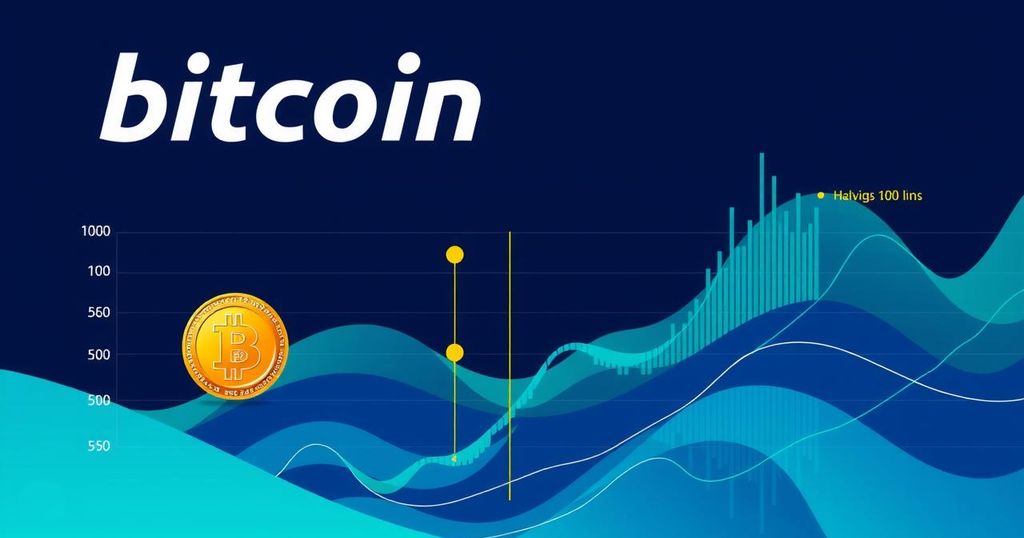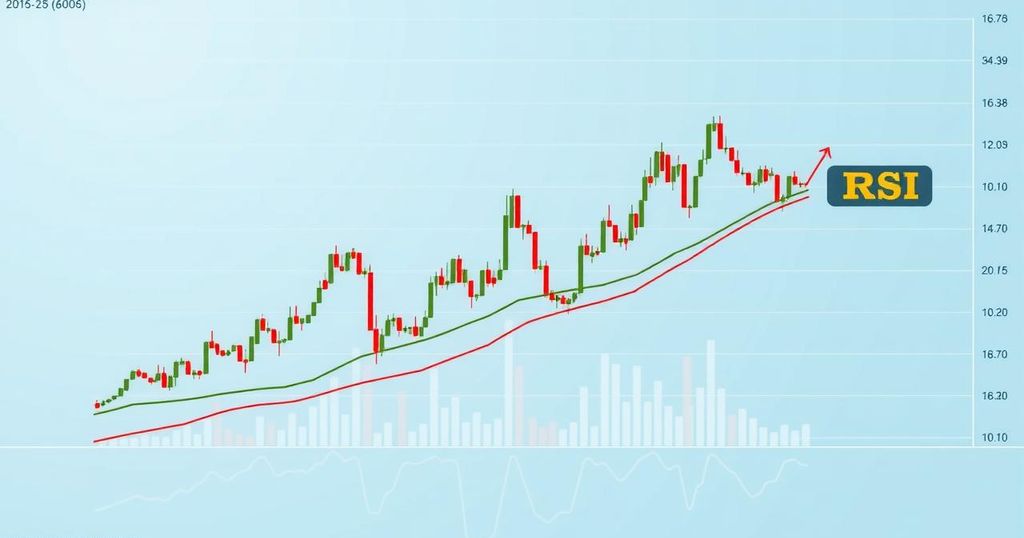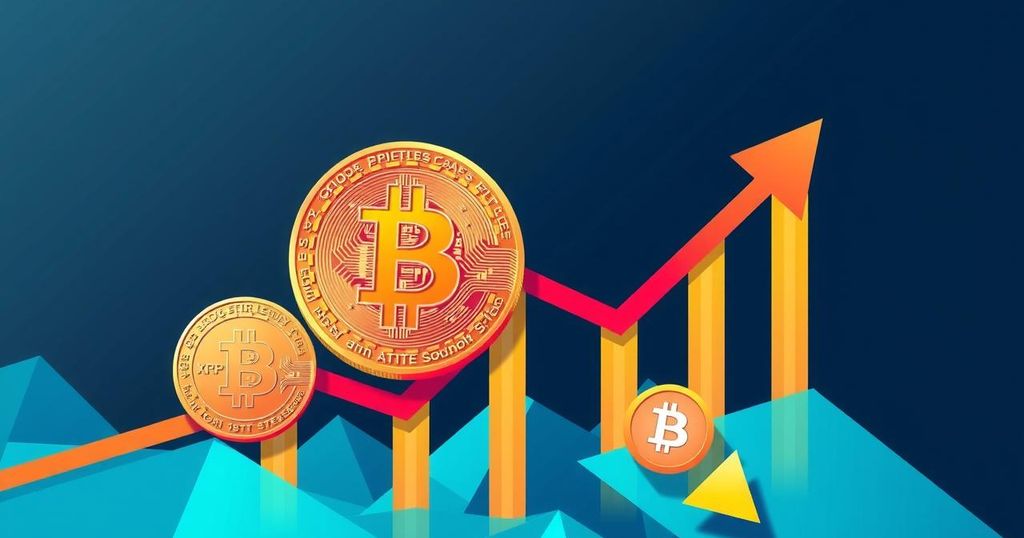Bitcoin’s Four-Year Cycle at Crossroads: Analyzing Halving Impact on Prices
Bitcoin’s four-year cycle faces challenges as its post-halving gains reach only 33.85%, significantly less than historical trends suggest. Factors such as regulatory changes and economic conditions play a critical role in this shift. Meanwhile, XRP exhibits potential bullish movement, though volatility and volume concerns remain.
On March 27, 2025, Bitcoin maintained a price of $87,027, prompting discussions regarding the reliability of its traditional four-year cycle. This cycle has historically seen significant price surges post-halving events, but recent market fluidity, regulatory changes, and economic trends challenge its predictive validity. Analysts question whether the cycle is weakening or simply evolving with market conditions.
Bitcoin’s price has exhibited a 33.85% increase following the April 2024 halving, contrasting sharply with past cycles that experienced larger gains. The 2024 halving reduced block rewards to 3.125 BTC; however, the modest price movement post-event has caused speculation about the cycle’s efficacy. Historical price increases following previous halvings far exceeded current performance, raising concerns among enthusiasts and investors alike.
Several factors contribute to the disappointing post-halving results. The earlier approval of Bitcoin spot ETFs in January 2024 may have spurred a pre-halving rally, leading to premature demand. Moreover, the increasing sophistication and maturity of the Bitcoin market have diluted the fundamental effects of halvings. Influences from macroeconomic indicators, such as the U.S. economic health, additionally overshadow supply factors, challenging Bitcoin’s previous growth patterns.
President Trump’s March 2025 announcement concerning a Strategic Bitcoin Reserve failed to inspire confidence, resulting in further declines from late January highs. Comparatively, Bitcoin’s post-halving performance has reached its lowest in 2024-2025, as evidenced by diminishing returns since previous halvings.
The divide between bullish and bearish perspectives highlights ongoing uncertainty. Some analysts predict a price peak of $125,000 in 2025, citing historical trends of peaks 12 to 18 months post-halving. Others caution against economic stagnation and predict potential price drops below $20,000 if demand wanes. This reflects Bitcoin’s transformation from a niche investment into a participant influenced by broader economic trends.
Shifting focus to XRP, on March 26, 2025, its price fluctuated between $2.43 and $2.48, displaying signs of bullish activity within a defined price range. The RSA and other oscillators indicate market balance; however, volume trends could lead to potential consolidation or breakout scenarios. Strong support remains above $2.40, suggesting optimism for future price movements, dependent on increasing trading volume.
Traders monitor the dynamics of XRP closely, with indicators showing a robust bullish stance marred by cautious sentiment around volume and oscillators. Future movements depend largely on whether XRP can maintain momentum above resistance levels, particularly the $2.60 mark, to reclaim previous highs, amidst the backdrop of fluctuating market conditions.
In conclusion, Bitcoin’s established four-year cycle is under scrutiny, with modest post-halving gains casting doubt on its predictability. Influences such as market maturity, ETF approvals, and regulatory concerns shape current trends. Conversely, XRP shows a resilient yet cautious market outlook. The interplay between supply dynamics and macroeconomic factors will ultimately determine the future trajectories for both cryptocurrencies.
Original Source: news.bitcoin.com








Post Comment